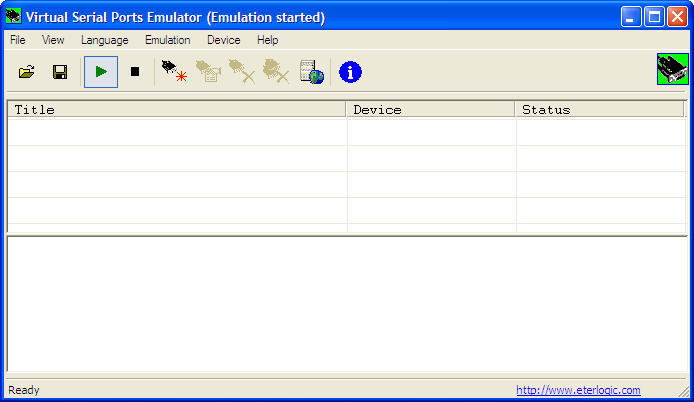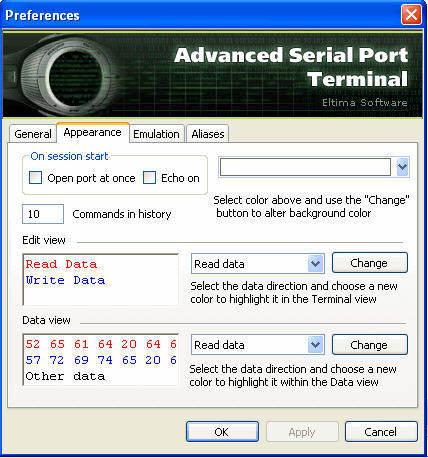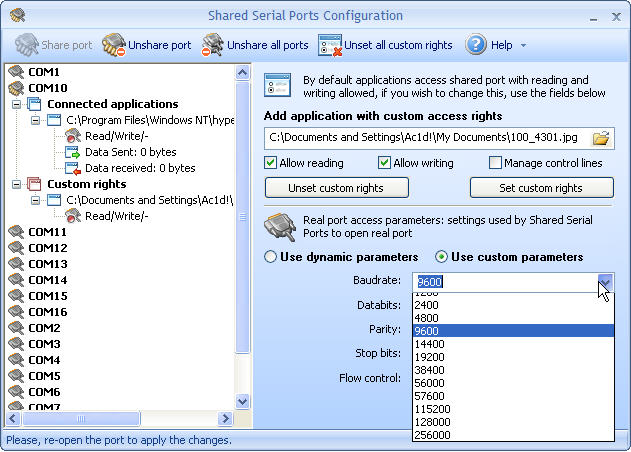

- #Serial port emulator mac mac os
- #Serial port emulator mac serial
- #Serial port emulator mac mac
- #Serial port emulator mac windows
#Serial port emulator mac serial
This is specifically embodied in the Macintosh by having inputs 'X1' and 'Y1' wired up to its serial controller chip, the SCC, to generate interrupts anytime they transition, and having inputs 'X2' and 'Y2' wired up as inputs to the 6522 VIA, which the processor manually polls upon receiving the X1 or Y1 interrupt. (for appropriate values of 'left' and 'right', of course) if sensor 2 has the same value as sensor 1 when sensor 1 has just changed, that's one pixel left otherwise it's one pixel right.every time sensor 1 changes state, observe the the mouse has moved by one pixel.Which the Macintosh (and most other similar computers) collapse into a simple process: Then if the cog is turning one way you'd expect to see the time-ordered input: sensor 1 on, sensor 2 on, sensor 1 off, sensor 2 off, sensor 1 on, etcīut if it's turning the other way, you'd instead see: sensor 2 on, sensor 1 on, sensor 2 off, sensor 1 off, sensor 2 on, etc What a quadrature encoder does is it uses two sensors, half a groove apart. (Disclaimer: it's not really a cog, but that's an easy image) If you observed the digital output of that sensor, you'd be able to tell how fast the cog is turning, which is half the problem solved. Picture a cog, with an optical sensor pointing through the grooves.

Quadrature encoding is a simple, physical process, that lends itself to a convenient cheat if you're synthesising input. Note that the port your device is assigned might be different from time to time (for example if you unplug and replug very quickly, the previous name hasn’t yet been released, so a new one is given to your device).The pre-ADB Macintoshes use a simple quadrature-encoded mouse input, no formal serial protocol. Linux ones are like /dev/ttyUSBX where X is first 0, and then 1, and then 2 for each device plugged in.

#Serial port emulator mac mac
Mac ones are like /dev.cu.wchusbserialxxx where xxx is different between different CH340 devices.
#Serial port emulator mac windows
Windows ones are like COMX where X is a different number for each COM port. Different OSes have different port identifier names.Windows uses two characters every time, Carriage Return & Line Feed (CRLF). Both Mac and Linux are systems which use the Carriage Return (CR) character to indicate the end of a line. Different OSes use particular end-of-line (eol) characters.This is the standard speed of a Vanguard board’s serial link. the same baud rate of 115200 bits per second, which determines how fast the bit-pulses are sent and received.the connection uses ASCII encoding to turn our text into bytes to be sent as pulses over the serial wire, and to turn pulses back into text.we ask miniterm to operate in raw mode just passing the bytes straight to our terminal console, otherwise special characters could be intercepted and treated as commands by miniterm itself.we use python3 -m to treat the module as a script to be run in python.Note the differences and common features between the miniterm commands run by Windows, Mac or Linux users If the commands above do not work, visit the troubleshooting page. Note: Linux users must have permission to access the serial port. Python3 -m -raw -eol CR -encoding ascii /dev/ttyUSB0 115200 Python3 -m -raw -eol CR -encoding ascii /dev/cu.wchusbserial630 115200 Connecting from Linux
#Serial port emulator mac mac os
(note unlike on other platforms, Windows python 3 is called just python) Connecting from Mac OS Python -m -raw -eol CRLF -encoding ascii COM3 115200


 0 kommentar(er)
0 kommentar(er)
